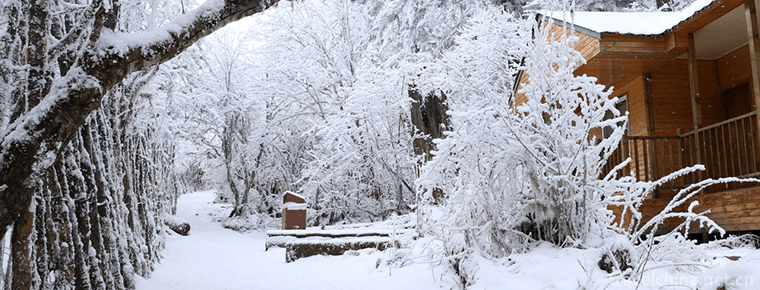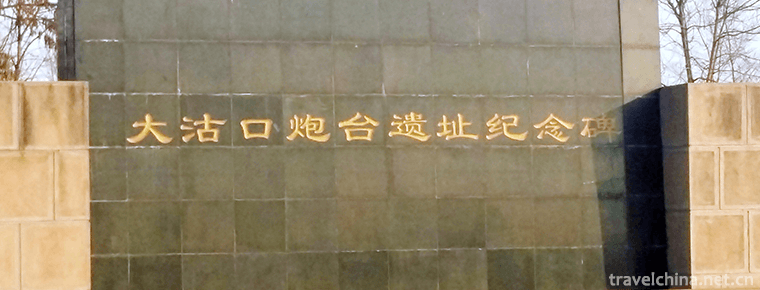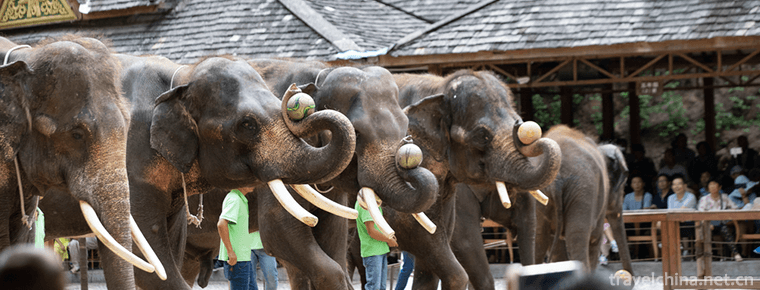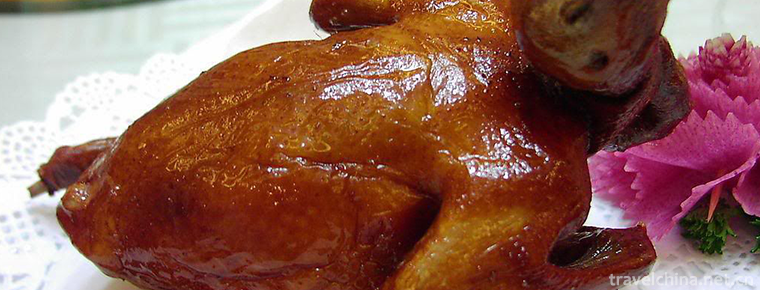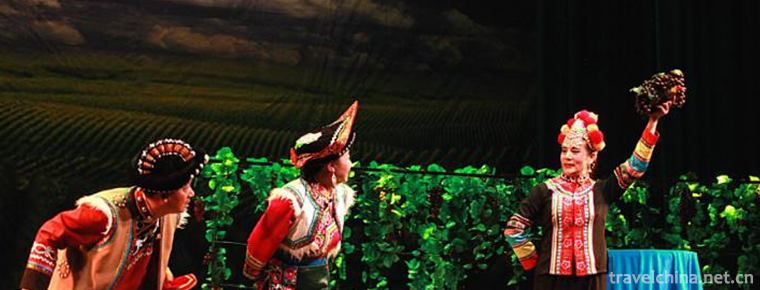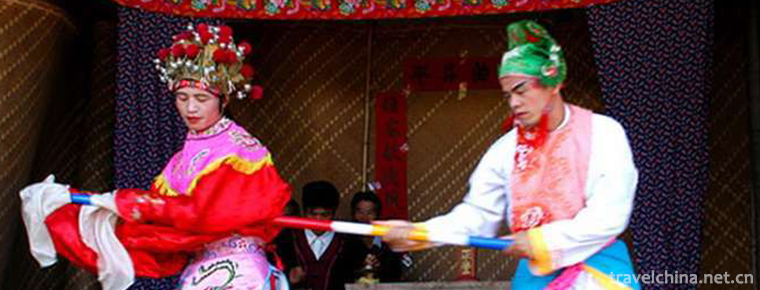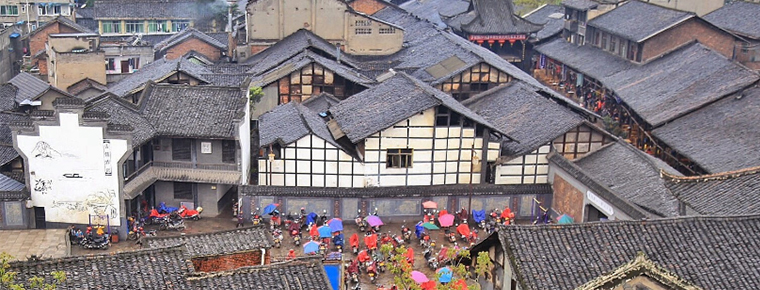Beiting Old City Site
The site of Beiting Old Town is the ruins of Beiting Mufu in Tang Dynasty. It is located 12 kilometers north of Jimusar County Town in Xinjiang Uygur Autonomous Region. In ancient times, it was a city pool in the Western Regions. It was an important transportation hub and trade transit station in northern Xinjiang. It was the only place for the northern route of the ancient Silk Road.
In October 2018, it was appraised as the national practical education base for primary and secondary school students.
Evolution of construction
In the second year of Emperor Xuan of the Western Han Dynasty (60 B.C.), Jinmancheng was the seat of the royal court behind the division. In the seventeenth year of Yongping (A.D. 74), Geng Gongtun, a Lieutenant of Wusi School, had hundreds of soldiers in Jinmancheng, the rear part of his Chechen division.
During the Han Dynasty, the area of Jinmancheng (Jimusar) became the home of the drivers.
In the third year of Huangchu (222 A.D.), Emperor Wendi of Wei still set up Mayor Shi of the Western City and Colonel Gaochang of Wusi (Zhishi Gaochang) to manage the Western Regions. Use Wei's seal to maintain close relations with the Central Plains.
After discussing Gaochang in 640 AD, Taizong Zhenguan of Tang Dynasty established Tingzhou as the political, military and cultural center at the northern foot of Tianshan Mountains, with heavy troops stationed.
In the 22nd year of Zhenguan (648 A.D.), Asna Helu, the grandson of Dianmi V, the founding chamber of the Western Turks, was appointed governor of Yaochi Capital, known as "Khan Floating Tu".
Gao Zongyongwei led the rebellion in four years (653 A.D.) and the rebellion in two to three years (658-659 A.D.) of Xianqing was calmed down. Then the Yaochi Governor's Office was abolished and the Jinshandou Protectorate Office was set up in Tingzhou to take charge of the Western Regions.
In the second year of Chang'an after Wu Dynasty (703 A.D.), there were four counties under the jurisdiction of Jinman, Luntai, Pu (later transformed into the back court) and Xihai, which were divided by Tianshan Mountain.
In the second year of Jinglong (708), Jinglong was upgraded to the Beiting Municipal Guardian House, which administered military and political affairs to the north of Tianshan Mountain, to the East and south of Balkash Lake and to the west of the Aral Sea. After changing the history of Beiting Festival, the Navy stationed here, and was trapped in Tubo in the sixth year of Zhenyuan (790).
After the establishment of Gaochang Uighur Kingdom in the mid-ninth century, it was known as Xia Du, one of its political centers; also known as "Don't Lose Eight Li", meaning five cities.
The Yuan Dynasty set up Shangshu Province, Xuanxiu Department and Marshal's Mansion in Bali. The early 15th century was destroyed by war.
In the forty years of Qianlong reign of Qing Dynasty (1775), Tang tablets were unearthed here. In the twenty-fifth year of Jiaqing (1820), Xu Song investigated the city site and found the remnants of Jinman County tablets.
After the 19th century, Britain, Japan and other countries sent expeditions to investigate and excavate.
In 1928, the Northwest Scientific Investigation Mission investigated and excavated the old city.
From 1979 to 1987, the Institute of Archaeology of the Chinese Academy of Social Sciences conducted an investigation and excavation.
In 1988, it was promulgated by the State Council of the People's Republic of China as a national key cultural relics protection unit.
In 2010, it was approved as one of the first 23 National Archaeological Sites parks in China.
In October 2018, it was appraised as the national practical education base for primary and secondary school students.
geographical environment
The site of Beiting Old Town is located at the north foot of Tianshan Mountains, on the alluvial plain of Beiting Township, Jimsar County. It is located at Bogda Peak of Tianshan Mountains in the South and Junggar Basin in the north. Its geographic coordinates are 89 12 43 in the east longitude and 44 05 52 in the North latitude, with an elevation of 485 M. It inclines slightly The climate in the area is warm and arid, with an average annual temperature of 4-7 C, an average annual precipitation of about 200-300 mm and an annual evaporation of 1885.2 mm.
Gucheng pattern
Overall layout
Beiting Old Town is an irregular north-south rectangle with a length of about 1.5 kilometers from north to South and about 1 kilometer from east to west. Influenced by Chang'an City of Tang Dynasty, the layout of the city is divided into two cities, inside and outside, like a huge "Hui" character. There are moats, horse faces, enemy platforms, turrets and gates in both inner and outer cities. In the prosperous Beiting City, the government office is mainly in the inner city. The ordinary people live in the outer city, which is divided into living area and business area.
Outer city
The outer city was built in the early Tang Dynasty and was repaired twice with a circumference of 4596 meters. The plains on the south, north and west sides are still in existence. The wall foundation is 5-8 meters wide and 3-5 meters high. The battlements (horse face) are 10 meters high and 7 meters thick. They are all built with rammed earth. The tamping layer is smooth and firm, about 7 cm thick. Four corners of the original corner building, the northwest corner of the platform 25 meters long east-west, 23 meters wide north-south, the residual height of about 11.5 meters. The moat is 30-40 meters wide and 2-3 meters deep.
The gate of Beicheng City is well preserved with a width of 8 meters. The pattern of Wengcheng City is still in existence. Outside the Urn City, there is a small rectangular city, which is called the Yangma City, a military defense facility. Outer city walls are made of rammed earth plates, and rammed layers are built directly on the original soil. The tamping layer is smooth, hard and firm, 5-7 cm thick and more than 10 cm local thickness.
Inner city
The inner city is located in the northeast of the central part of the outer city. It was built in the period of Gaochang Uighur. The inner city is divided into two parts: the first is 800 meters in length from north to South and 600 meters in width from east to west; the second is 400 meters in length, the inner city is about 3 kilometers in circumference, 3-4 meters in width and about 2 meters in residual height. City walls are rammed, rammed layer built on the original soil, flat rammed, no rammed nest, rammed layer thickness of 10-15 cm, individual thickness of about 20 cm.
The remains of the north and West gates of Neicheng remain. The north gate is 5.5-6 meters wide. There are symmetrical row fork pile grooves on the left and right platform foundations. It was formerly a beam-type wooden door hole. There are 14 horse faces outside the city wall, with a distance of 50-70 meters. There is one enemy platform in the middle of the East and West walls, and the remnants of the corner towers in the southeast, northwest and southwest still exist. The trench is 10-30 meters wide and 1-3 meters deep. The inner and outer walls of the inner city have the same structure as those of the outer city, and their height is stronger and more dangerous than that of the outer city pool.
West Temple
Two kilometers west of the city is a royal monastery in the period of Gaochang Uighur. It is the only remaining early Buddhist site in the northern foot of Tianshan Mountain in Xinjiang. Underneath the ground is the rammed earth foundation, and above the ground all Adobe masonry. The plane is rectangular, 70.5 meters long in North and south, 43.8 meters wide in East and west, divided into two parts. The north is the main hall, with large Buddha statues, and the north, East and west of the hall are surrounded by caves. In the south, there are courtyards, temples and warehouses in the East and west.
Remains of cultural relics
In the twenty-fifth year of Jiaqing in Qing Dynasty (1820), Xu Song, a Chinese scholar, discovered the remnant tablet of Jinman County in Tang Dynasty. After the founding of the People's Republic of China, many surveys and mapping of the site of the old city of Beiting were carried out. Pottery, earthen copper, iron and coins were unearthed in the city. Pottery mainly consists of muddy grey pottery, black pottery and red pottery. Mainly for pots, urns, pots, etc. There are a pair of ear gray pots, a black pot, two complete pots, and a crockery coffin with a head-shaped button cover on the top. There are three kinds of brick: lotus-petal-pattern square brick, plain square brick and plain rectangular brick. The tiles unearthed in the Tang Dynasty are mostly green-grey, with a high temperature and a hard texture, with a face-to-face diameter of 11.5-14 cm. Basically, they are all decorated with lotus pattern, which is basically the same as the Tang Dynasty tiles unearthed in the two capital cities of the Tang Dynasty. They are single-petal tiles, but no double-petal lotus pattern tiles are found. There are bronze mirrors, body guards, bronze Buddha, copper coins, copper rods, iron scissors and so on. All coins are Kaiyuan Tongbao. In the northwest corner of the city, copper official seals of the Tang Dynasty, "Pu Leizhou Seal" and copper lions, stone lions, grape-grain bronze mirrors, carved stone balls, sewer pipes were unearthed. There is a large stone mill in the ancient city, as well as many saddle-shaped, bridge-shaped grinding stone tools and large pottery containers, which shows that this was once a large-scale grain-tunning base
Fifty-three pottery objects were found in the first excavation of Xida Temple, including urns, basins, bowls, dishes, lamps and spinning wheels. Among the 7 pieces unearthed, one piece of celadon belongs to Yaozhou kiln in Northern Song Dynasty, two pieces of moon white porcelain and four pieces of sky blue glazed porcelain belong to Jun kiln in Jin Dynasty. There are 24 pieces of unearthed jades, including Gui, Zhu and Huan. One sunshine and moonlight gold was unearthed, with the four characters of "sunshine and moonlight gold" in Chinese on the front and minority languages on the back.
Buddha statues are sculpted in the caves and palaces of Xida Temple. Painting halls and East caves are painted with murals. Drafting in light ink, with iron line drawing as the main tone, red, ochre, yellow and other colors as the main color. Location arrangement and composition are basically the same, mainly for the change, feeding, story painting and feeding monks, feeders and so on. One of them is well preserved, with the king's trip map on the north and the siege map on the south. There are titles and inscriptions in Uighur and Chinese beside murals and statues. The monastery site has been built for protection and has a cultural relics preservation office.
Site value
The statue of Xida Temple is an important material material for studying Uighur sculpture. The murals include 1000 Buddhas, Bodhisattvas, Buddhist idols, nurturing Buddhist statues, and stories of Buddhist sutras. There are inscriptions in Uighur and Chinese in the paintings, which are precious materials for studying ancient religions, arts and languages in Xinjiang.
Among them, murals such as "Eight Kings'Sharitou" represent the highest level of Uighur Buddhist art. The temple has unique Uighur characteristics in the shape, statues and murals of Buddhist temples, especially in the plane configuration of Buddhist temples. No exactly identical examples have been found, which provides valuable material materials for the study of religion and culture in ancient Western Regions, especially in Beiting region.
A pottery coffin found in the old city has a cover with a head-shaped button on the top of the coffin, which is of great value to the study of the people and customs living here at that time.
Site protection
From 1979 to 1980, the Archaeological Institute of the Academy of Social Sciences carried out a rescue excavation of the Xida Temple in Beiting, clearing out part of the palaces and Buddhist grottoes.
In order to prevent wall collapse during construction, the original tamping method was used to repair the north and west sides of Xisi protective greenhouse to increase wall bearing gravity. The Eastern niches and walls are strengthened and protected.
In 2009, the protection fence project of the old city site of Beiting was completed, and the collection and analysis of related data such as overall surveying and mapping, soil quality analysis and astronomical observation were completed. The buildings attached to the cultural relics and those damaged by the cultural relics will be relocated. The asphalt road crossing the city is diverted and the original open protection mode of the old city is gradually formed into a fully enclosed protected area.
Since 2010, Xidasi Site Protection and Development Project has started for three years, with a total investment of 19 million yuan.
Since 2010, the construction of ruins parks has been started. The state and local governments have jointly contributed 220 million yuan. In order to maintain the original appearance of the site, the original construction techniques, such as crack reinforcement, crack grouting, cave roof reinforcement and top gully treatment, are adopted to strengthen the tendons and strengthen the bones of the ancient city.
In 2014, the main body reinforcement project of Beiting West Temple, a subsidiary building of Beiting Old City, started in early July with a total investment of about 5 million yuan.
Tourism information
1. There are no buses in the city. From the urban area of Turpan, you can take a special tour bus.
2. Take a bus to Jimsar County Town first, and take a bus to Hongqi Farm or a taxi from the county town.
3. The site has improved the tourist reception facilities, and visitors must take special sightseeing buses to enter the scenic spots.


-
Wuyuan County
Wuyuan County, now under the jurisdiction of Shangrao City, Jiangxi Province, is one of the six counties in ancient Huizhou. .
Views: 183 Time 2018-11-11 -
Conch Valley Scenic Area
Hailuogou is located in Moxi Town, Luding County, Sichuan Province, on the eastern slope of Gongga Mountain. It is a very high mountain area on the eastern edge of the Qinghai-Tibet Plateau.
Views: 182 Time 2018-12-12 -
Tanggu Dagukou Battery Site Museum
Dagukou Battery Site Museum is located on both sides of the Haihe River estuary in the southeast of Tanggu, Tianjin Binhai New Area. It is a national education and youth education .
Views: 153 Time 2019-02-13 -
Wild Elephant Valley in Xishuangbanna
The Wild Elephant Valley in Xishuangbanna is located in Mengzi Nature Reserve and "UNESCO Man and Biosphere Reserve" of Xishuangbanna National Nature Reserve.
Views: 129 Time 2019-02-25 -
Eight treasures quail
Babao quail is a dish. Its main ingredient is pure quail, etc. Its ingredients are purple quail, lotus seed, etc. Its seasoning is peanut oil, salt, soy sauce and so on. It is made by deep-frying..
Views: 255 Time 2019-03-25 -
Ping Tan drama
Pingjiao Opera is a kind of high-pitched opera that sings opera and prose in local dialect. It is a unique local opera in Fujian Province. It was formed in the early Qing Dynasty, originated in Pingna.
Views: 123 Time 2019-06-09 -
Linking Luhe boxing
Xinyi Liuhe Quan, also known as Xinyi Quan and Liuhe Quan, is one of the most famous excellent types of boxing in China, which combines fighting, fitness, self-defense and health preservation. It is o.
Views: 144 Time 2019-07-06 -
Yi opera
Yi Opera, a local traditional drama in Dayao County, Yunnan Province, is one of the national intangible cultural heritage..
Views: 399 Time 2019-07-12 -
Yongan Daqiang Opera
Yongan Daqiang Opera was formed in the mid-Ming Dynasty. It is a genre of Yiyang Opera. It is called Daqiang Opera because it is "big gong, big drum and big voice singing high tune". During .
Views: 215 Time 2019-07-14 -
Luocheng ancient town
Luocheng ancient town, known as "China's Noah Ark", is located in the northeast of Qianwei County, 60 kilometers away from Leshan City and 25 kilometers away from Qianwei county. There are seven ethnic groups, Han, Hui, Yi, man, Tibetan, Li and Miao. .
Views: 85 Time 2020-10-15 -
Dazhou hydrology
The rivers in Dazhou city mainly belong to the Jialing River water system, which is a tributary of the Yangtze River. It originates from Daba Mountain and distributes in the form of branches from north to south. Qianhe River, Zhonghe River and Houhe Riv.
Views: 170 Time 2020-12-20 -
Population of Dazhou
By the end of 2019, the registered residence population of Dazhou was 6 million 589 thousand and 400, with a permanent population of 5 million 741 thousand, and the urbanization rate of permanent residents was 47.14%. The annual death rate was 46.
Views: 357 Time 2020-12-20

